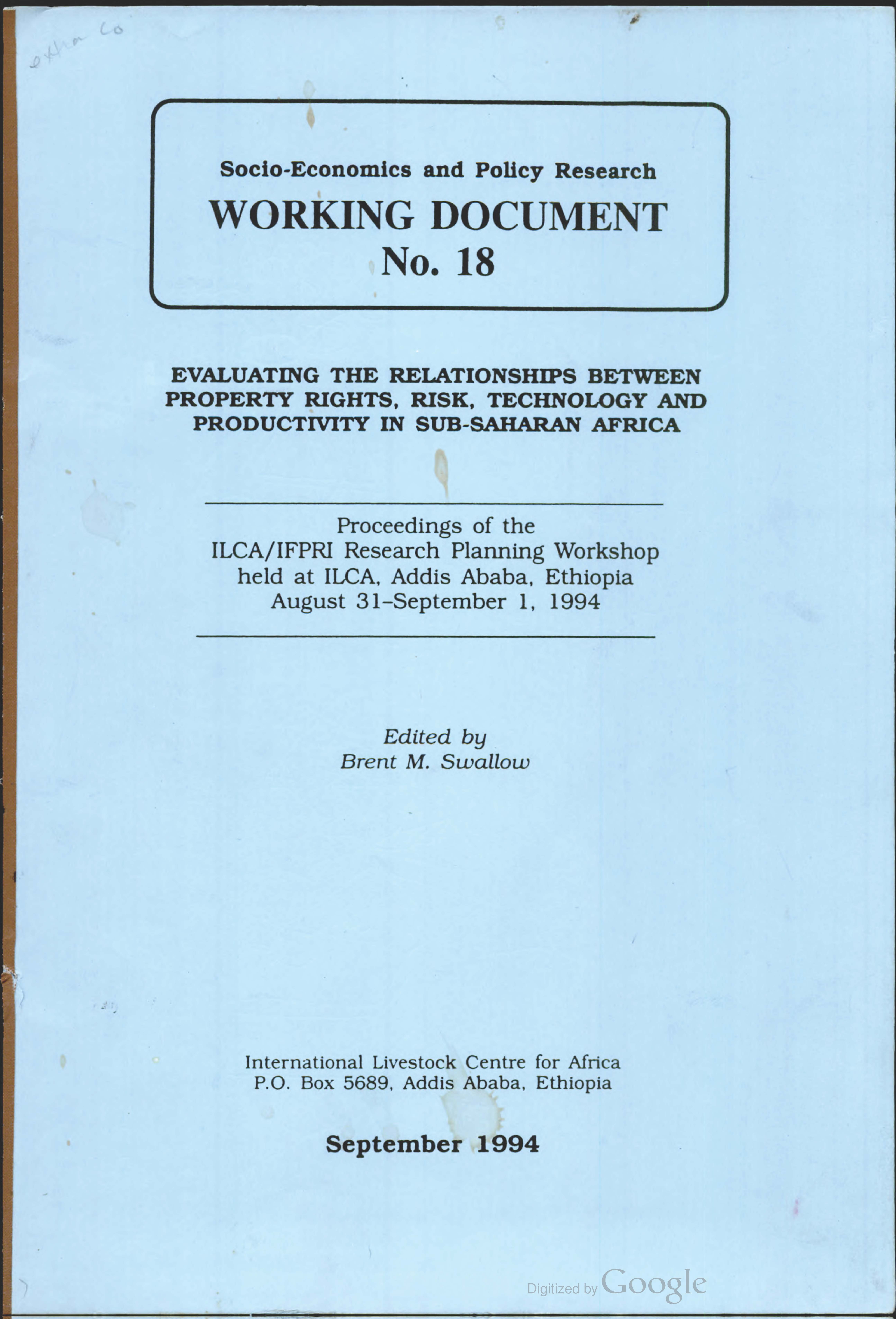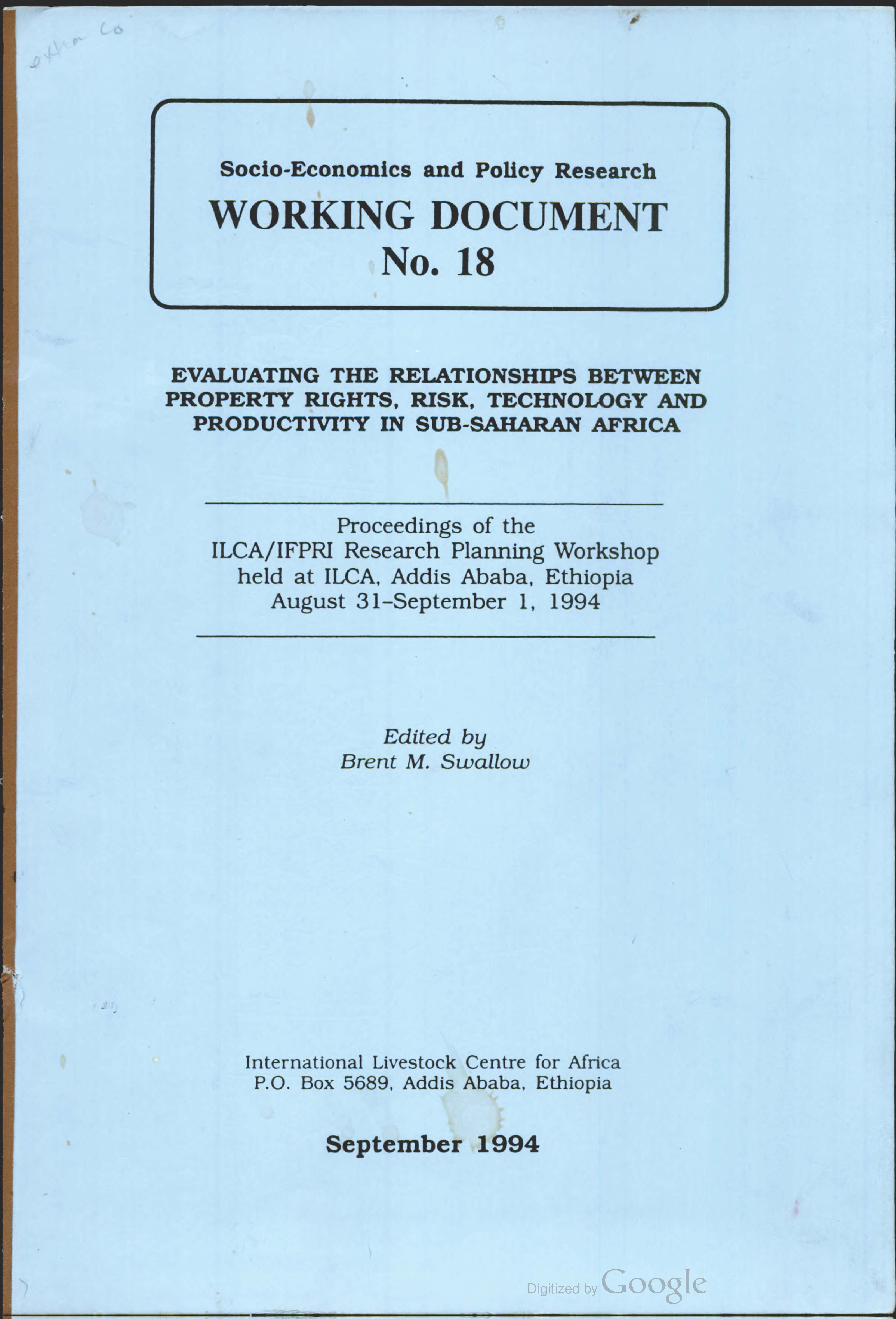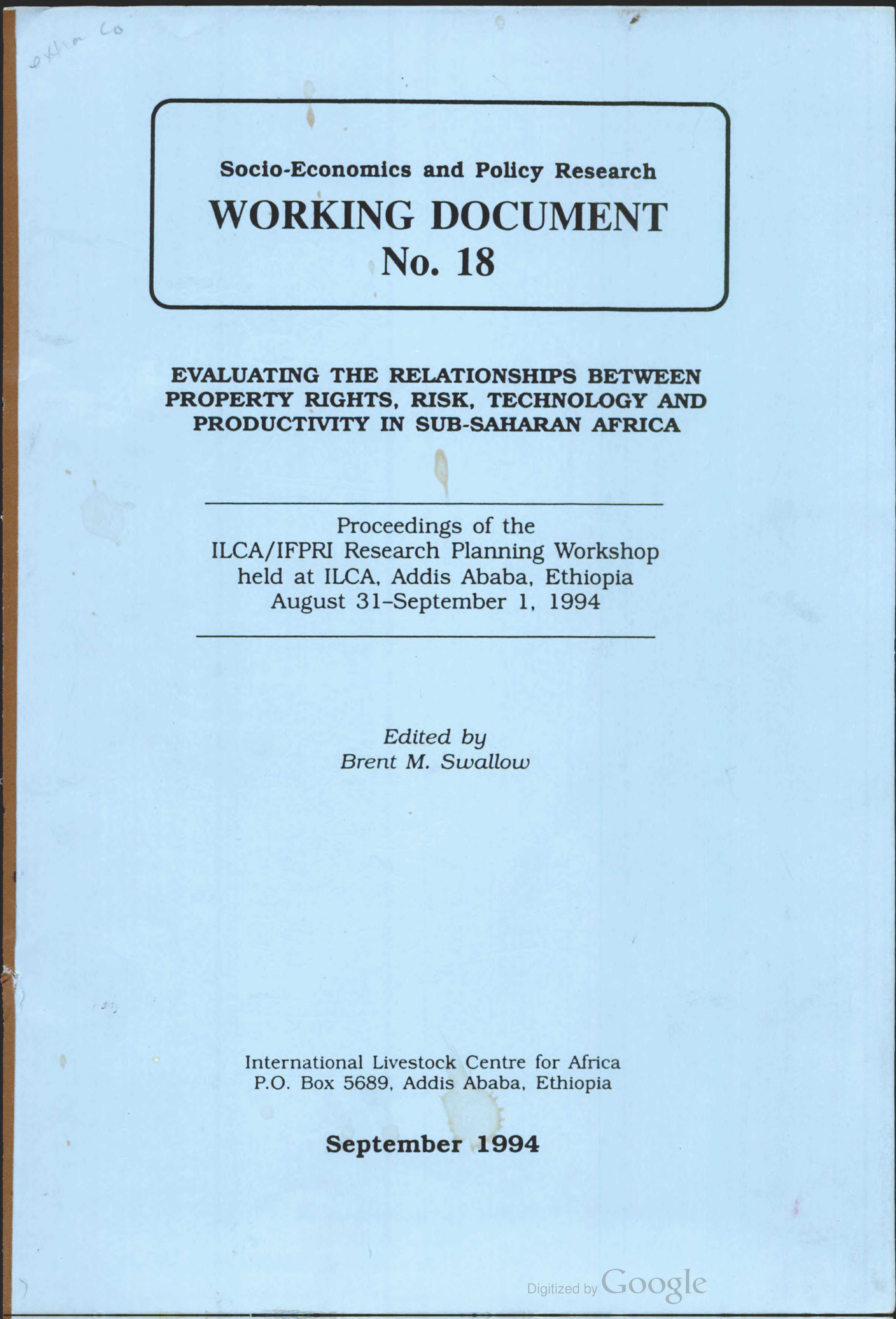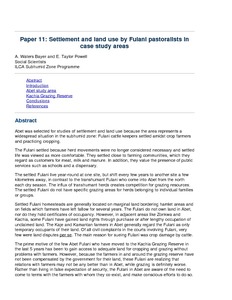Evolution of resource use and property rights under risk: Issues
Since September 1993, ILCA and IFPRI have been engaged in a discussion about the most important, researchable, issues in the area of property rights. A concept note has been developed for collaborative research on the evolution of resource use and property institutions under risk. The starting point or framework was the Boserup, McIntire (and others) model of gradual intensification. This model has been used in documents such as the Winrock Assessment of Animal Agriculture to predict paths of future development and recommend research to facilitate that development.
ILCA/LTC research on property rights and alley farming in West Africa
IITA developed alley cropping (also called hedgerow intercropping by ICRAF) in the mid 1970s to alleviate the problems of reduced soil fertility, reduced yields and soil erosion that were associated with population growth and reduced fallow periods. In the early 1980s this technology was adapted by ILCA to serve as a source of feed. On-farm research was conducted in two locations of South-West and South-East Nigeria. The locations differ in terms of population density, soil fertility, land tenure and typical farm layout.
Property rights and soil fertility management in Niger
This research was undertaken as a Ph.D. dissertation (Stanford University) in conjunction with the ILCA programme in Niamey, Niger. The objective of the research was similar to that of the World Bank studies: to test how land tenure affects land-improving investment, agricultural productivity and resource management. The standard hypothesis is that land tenure that is non-exclusive insecure or non-transferable will lead to under-investment and depressed factor mobility.
Traditional strategies and adaptive resource use by crop-livestock producers in the Sahel
This presentation concerns the key property rights issues arising in the West African Semi-Arid Tropics (WASAT). The WASAT contains three main agro-climatic zones: Sahel (300–600 mm of annual rainfall falling in 2.5–4 months); Sudanian (600–900 mm, 4 to 6 month rainy season); and Guinean (900–1100 mm, 6–7 month rainy season). The author presented a conceptual framework to explain the responses that farmers in the WASAT region have adopted to deal with changes in their environment.
The legal status of rural women in 19 Latin American countries
Selected species and strategies to enhance income generation from Amazonian forests
Situacion juridica de la mujer rural en diecinueve paises de America Latina
Settlement and land use by Fulani pastoralists in case study areas
Presents results of studies of settlement, land use & relations w. settled farmers of Fulani agropastoralists in Abet & Kachia Grazing Reserve in Subhumid Nigeria. Discusses reasons of choice of site, pattern & right of grazing and access to land.
IXe Congrès forestier mondial Mexico 1985
Le prsent numro d'Unasylva est une introduction au congrs. Il ne contient pas les documents qui seront prsents Mexico, mais un entretien avec M. Edouard Saouma, Directeur gnral de la FAO, et cinq articles qui, on l'espre, constitueront une toile de fond utile pour le congrs. Les sujets de ces articles - la foresterie au-del de l'an 2000, l'agriculture itinrante, l'agroforesterie, la foresterie communautaire et l'aspect social des contrats d'exploitation forestire - ne couvrent nullement l'ensemble des thmes qui seront traits Mexico.
Special issue: forest administration for development
With the purpose of bringing new ideas to bear on the subject of institutional support to forest policy implementation, a Consultation sponsored by FAO and the Swedish International Development Authority (SIDA) was held at FAO Headquarters in Rome from 2 to 11 February 1983. Twenty-nine participants attended In their individual capacities, drawn from 24 countries of Africa, Asia, Europe, Latin America and North America and from a very wide spectrum of disciplines. This issue of Unasylva presents a selection of the papers discussed at the Consultation.





